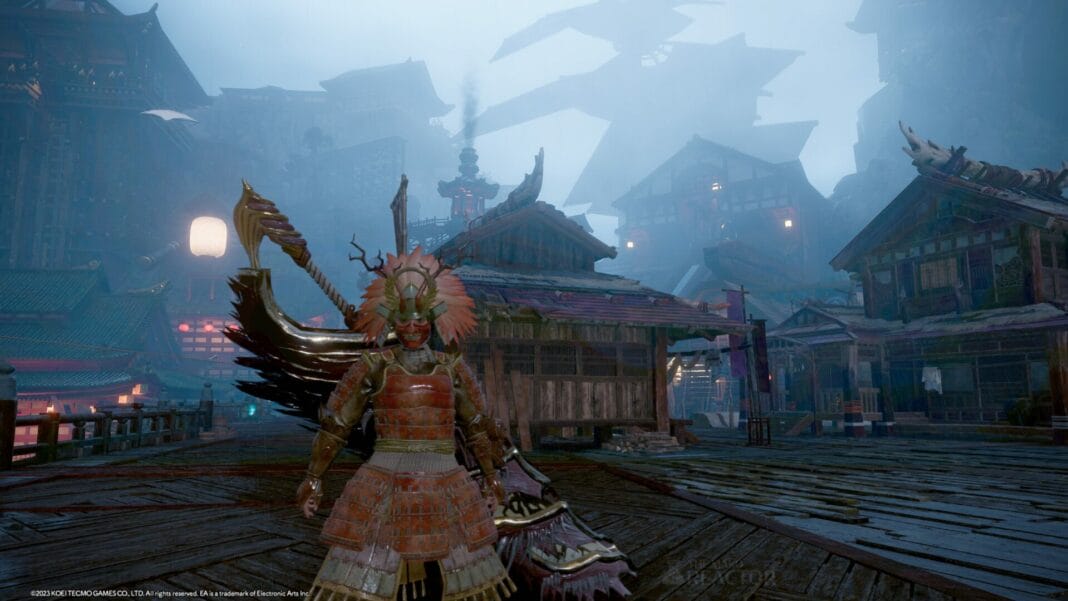Wild Hearts from Omega Force, Koei Tecmo, and EA is a game I was looking forward to quite a bit when it was revealed. I love Monster Hunter, and also enjoyed the Toukiden games quite a bit. I initially was going to review Wild Hearts on PC, but that version has given me more trouble than any other PC port in years, and I ended up dropping my playthrough there to focus on the console versions. Having now played over a 100 hours in Wild Hearts across platforms and having finished the story and spent a week or so on the postgame, I wanted to cover the current state of the game in my Wild Hearts PS5 review. This review will cover the core gameplay, comparisons to Monster Hunter, new features I’d love to see become staples in the genre, PS5 features, post-launch support, the sublime soundtrack, and more.
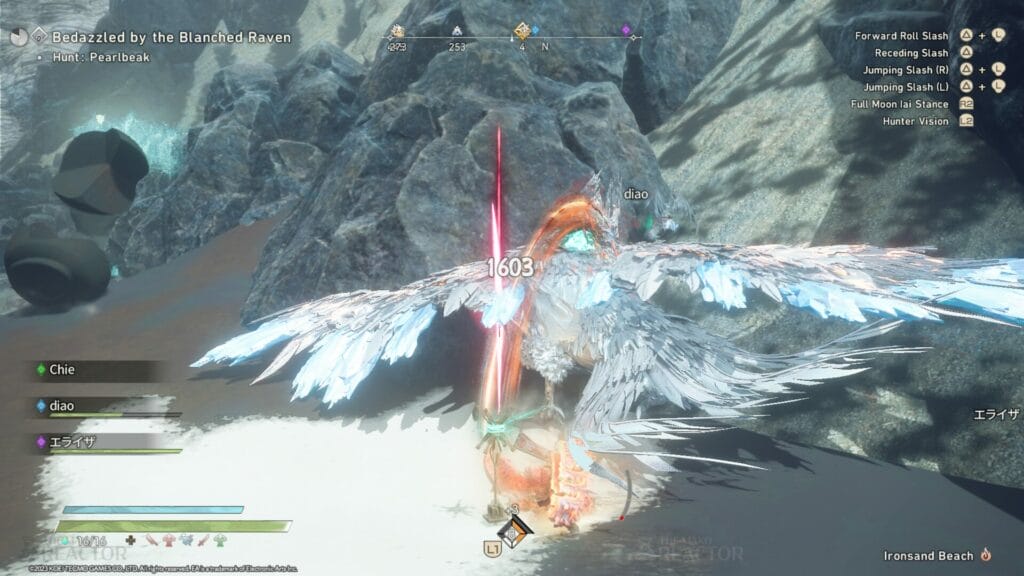
When my Monster Hunter friends group asked me about Wild Hearts around the time embargo lifted back in February, I laughed at how describing various in-game mechanics and terms felt like talking about a souls-like to a FromSoftware fan. Kemono for monsters, Nodachi for Wild Heart’s take on Great Sword, and more initially had me thinking everything would fall into place and my experience would be smooth sailing. I was wrong. It took me about a dozen or so hours to stop playing this like a Monster Hunter game, and start learning how to play Wild Hearts. Once it clicked, I was addicted. Having enjoyed many non Monster Hunter games in the hunting genre like God Eater, Soul Sacrifice, and Toukiden, I was hoping Wild Hearts would deliver on a game I’d spend tons of time in, while also using it as my relaxing game when taking a break from work.
When I was making my way through the main story in Wild Hearts, I felt like Omega Force was inspired by not only Monster Hunter World specifically, but also modern multiplayer games. The latter is what makes Wild Hearts an actual joy to play online versus how annoying it is to play Monster Hunter World’s story with friends. In fact, the seamless drop in nature of online play (with full cross platform matchmaking) in Wild Hearts makes me hope Capcom is paying attention for the next Monster Hunter game. Barring the online, Wild Hearts goes for its own thing with its narrative and the way new mechanics and Kemono are introduced. The story was better than I expected with mostly good voice acting, but you aren’t playing a game like for the story. Hunting games live and die by how much fun they are in the moment, and also whether the core gameplay loop has enough to have you coming back for more.

After a short set of tutorial quests that teach you the basics of the karakuri and some combat, you reach the hub of Minato. This is where you get into the groove of taking on a quest, hunting a Kemono, gathering some items, crafting better gear, and then moving to the next Kemono. Barring two specific Kemono, I didn’t struggle much in Wild Hearts after all the time I’ve spent in Monster Hunter and in games that have you managing your stamina and i-frames. Wild Hearts as a Monster Hunter Great Sword and Hunting Horn main, has been an interesting game to learn. I decided to try out the Nodachi (similar to the great sword with some hammer elements) and Wagasa (umbrella-like weapon that reminded me of other hunting games). I stuck to the Nodachi for the majority of my time in Wild Hearts, and grew to love it.
Getting into the groove of charging, using the spring karakuri to propel myself out of harm’s way while regaining some stamina, and attacking to charge quicker leading into a massive damage attack never got old. This of course required observing Kemono attack patterns and also learning the various maps. I initially struggled quite a bit, but as with my first Monster Hunter, practicing in the training area and on easier hunts paid off.

Playing Wild Hearts without using the Karakuri would be like playing Rise and Sunbreak without using the wirebug and silkbind attacks. The entire game is built around that. Karakuri are devices hunters use to do a plethora of things. These include traversal, damage, exploration, crafting, healing, and more. You can conjure karakuri almost instantly during battles with Kemono (this game’s monsters) to do things like distracting them, enhancing your damage, and trapping. There are also permanent Karakuri which are called Dragon karakuri. I will get to those in a bit.
Monsters, or Kemono in Wild Hearts, in hunting games can make or break the experience for many. The initial reveal had me a bit worried for variety, but I’m very pleased with the different monster skeletons Wild Hearts has across its many Kemono. There are also variants, more powerful versions of older Kemono, and more. The highlights of the time I’ve spent with Wild Hearts are Golden Tempest, Emberplume, Amaterasu, and Murakumo. This might change with potential updates. Each of the Kemono have attack patterns, unique drops, and movement styles to learn. As you get accustomed to them, your hunts go better, and you will also be confident enough to try your Hunting Arm. This special ability lets you obtain loads of karakuri thread above your current maximum through a Kemono’s weakness indicated by a glowing green spot on its body.
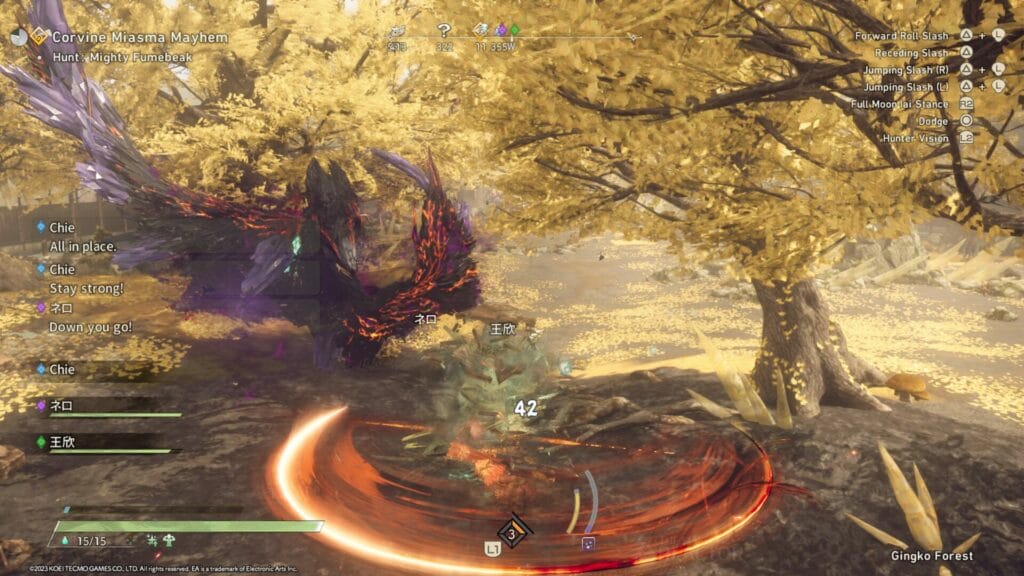
When you start a hunt, you can summon help right from the map by selecting the Kemono and requesting assistance. Up to two other players can join the hunt on the fly. If you don’t want to do this from your own hunt, you can also use hunting gates scattered all over the maps and hubs to join others. You can also search for sessions for a specific mission from the map which is quite unique. Instead of choosing high, low, or master rank, you can change the chapter for the map and see different missions and Kemono in each location. From here, you can join a session or request assistance and create your own session for a hunt. It works brilliantly in practice.
Armor, weapons, and talismans are very interesting Wild Hearts. I’m not going to waste too much time detailing the systems, but the way you can forge weapons through the weapon tree while going through nodes and grabbing skills for your ultimate min-max build makes each weapon feel more personalized. You could obviously go on a straight path to your goal weapon, but you will be missing out on potentially great skills. Armor has a Human and Kemono path that have their own pros and cons. I ended up going for a Human build with my Nodachi setup for loads of stamina and comfort.
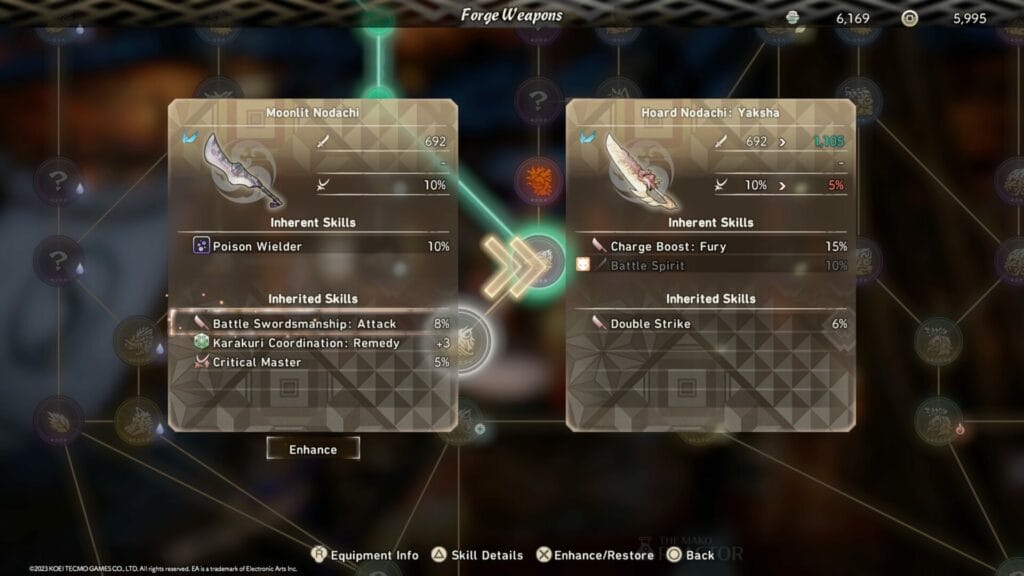
A Monster Hunter-focused channel I’ve been following for years, Rage Gaming Videos, had a great Nodachi build I worked towards before. I also love that you can discard your current enhancements for the weapons and have all materials returned with a fee of some gold. This lets you spend time trying out different skill paths and builds without worrying about farming specific Kemono over and over again.
As I mentioned above, Dragon karakuri let you personalize the maps and hub in your game with the ability to se tup camps, hunting installations, respawn points, and crafting wherever you want within certain restrictions. On your map, you may choose to place a camp near a mountain that is close to a flat arena while someone else may choose to have a camp on the other side. Wild Hearts gives you the freedom to do all of this based on dragon pits. These pits appear at fixed locations on the map, and you can enlarge them with the help of crystals. This lets you conjure more Dragon karakuri which makes getting around the map quicker and more convenient during a hunt or a gathering run.
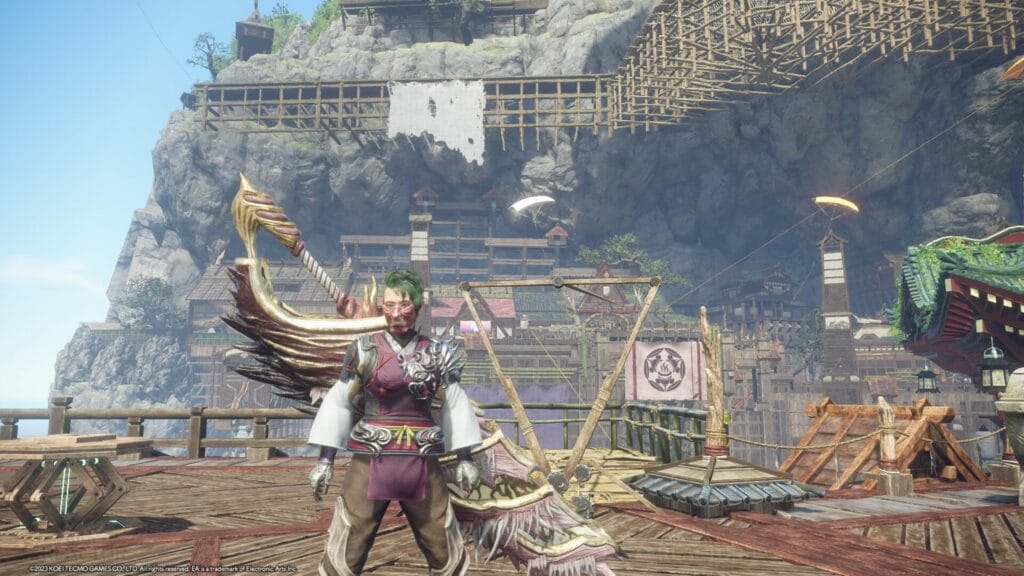
Speaking of gathering, Monster Hunter’s farm can now be crafted at different points of each map. This means you can now collect your ingredients, ore, and more whenever you start a hunt thanks to the Dragon karakuri that lets you setup Shrines or cages for wildlife. This lets you collect ore and items from various maps from the camps. This may make the farm aspect seem like busywork if you don’t hunt at different locations, but I liked how this made me want to take on hunts in each area so I can optimize collecting and gathering.
Each area also has Tsukomo hiding. These are ancient creatures that help hunters. Befriending them lets you increase the stats of your own Tsukomo helper which is Wild Hearts’ palico. You can upgrade specific stats and earn your own benefits like being able to hold more thread to use to craft karakuri during hunts.
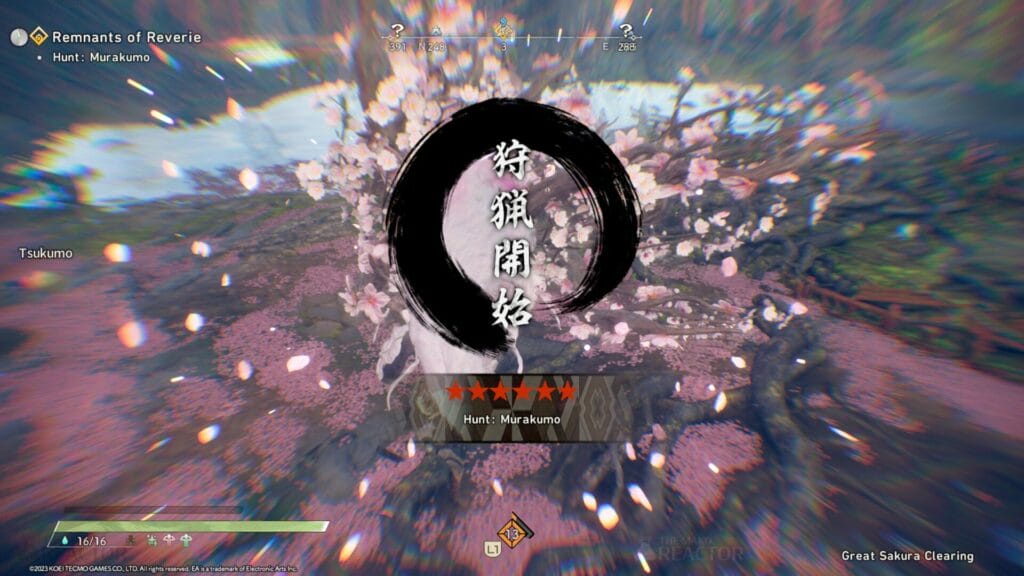
After beating the story, you get access to hunting volatile, deeply volatile, and special Kemono added through updates. These offer a massive increase in difficulty, and the story ending also unlocks the ability to limit break gear. Wild Hearts has a ton of gameplay systems, and it really makes me wish the team spent more time optimizing everything so we would’ve had a more polished experience on all platforms. The game deserves better, especially on PC.
On PS5, Wild Hearts has Activity Cards support, amazing DualSense haptics, and adaptive trigger support. It is massively better than the current implementation Monster Hunter Rise has. Having spent time with Wild Hearts on all platforms, the DualSense features made me stick with the PS5 version for my main playthrough. Ideally cross save would’ve been in, but cross play online is good enough.
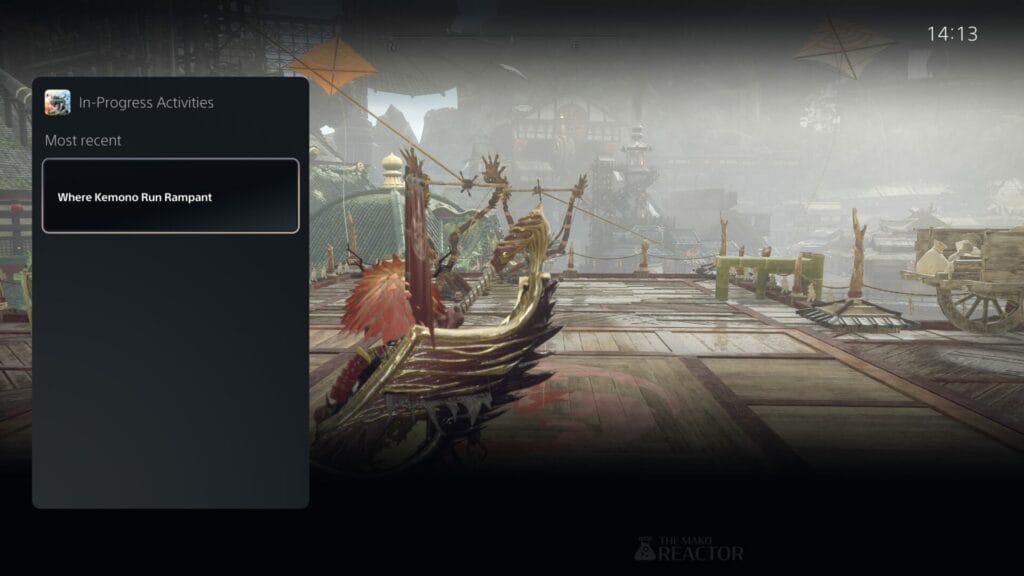
The online in Wild Hearts is amazing. I’ve been getting into hunts to help others in seconds and also see people regularly filling up my hunts when I request assistance in under 30 seconds. This isn’t as quick as Sunbreak on Switch or PS5, but a lot faster than Sunbreak on Xbox or Steam. There is still a player base on consoles at least going by my experience across the mid to postgame in Wild Hearts over the last few weeks. I’ve also been playing the early hunts with a friend who just got the game and we’ve had no trouble getting more people to join the hunts. This also helped me clear out most of the side quests that I missed in earlier chapters.
Right from the first trailer, I was curious to see how the actual game would look and feel in motion. Wild Hearts is a bit inconsistent visually, but it can look stunning. Some low resolution textures and pop-in issues hold it back, but it mostly is a huge step above anything else in the genre. I stuck to performance mode on PS5 and it wasn’t remotely close to a perfect experience. I put in thousands of hours into Monster Hunter World on PS4 and Monster Hunter Rise on Switch so this wasn’t too bad, but for a game built for PS5 and Xbox Series X|S, Wild Hearts needed more optimization. The Kemono designs and game aesthetic in general are amazing, including through the weapon and armor designs. Minato is also really a great and dense hub.
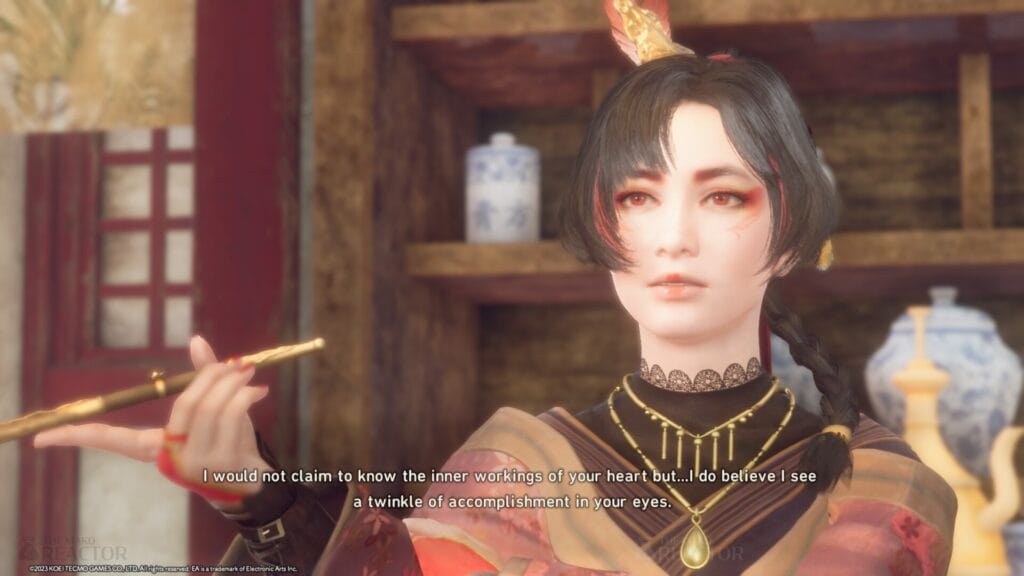
On the audio side, Wild Hearts includes voice acting in English, Japanese, French, German, Italian, and Spanish. I tried the English and Japanese options. The former was a bit inconsistent with the latter being better overall. I’m not a fan of how certain Japanese words were spoken in the English dub rather than being translated. Barring that, the audio design is better than I expected. Sound effects and atmospheric sounds during hunts are very good, but the real star of the audio is the soundtrack. Right from the main menu and character creation, I knew Masashi Hamauzu was involved. Any fan of his work can instantly recognize his work. The Kemono themes like Golden Tempest and also area-specific music are brilliant. My only complaint with the music is that I can’t buy it digitally or physically.
Wild Hearts on Steam Deck
While this review is about the PS5 version, I did download the Steam version I’ve owned since launch on my Steam Deck to see if it was any better. While it is better than at launch, I still consider it unplayable on Steam Deck with how it looks and runs right now. Hopefully the team can work on improving the PC version in general so it runs better on Steam Deck in the future. Since Wild Hearts is only on PS5, Xbox Series X|S, and PC, I was hoping the game on Steam Deck would deliver a good portable experience. It is anything but that right now.
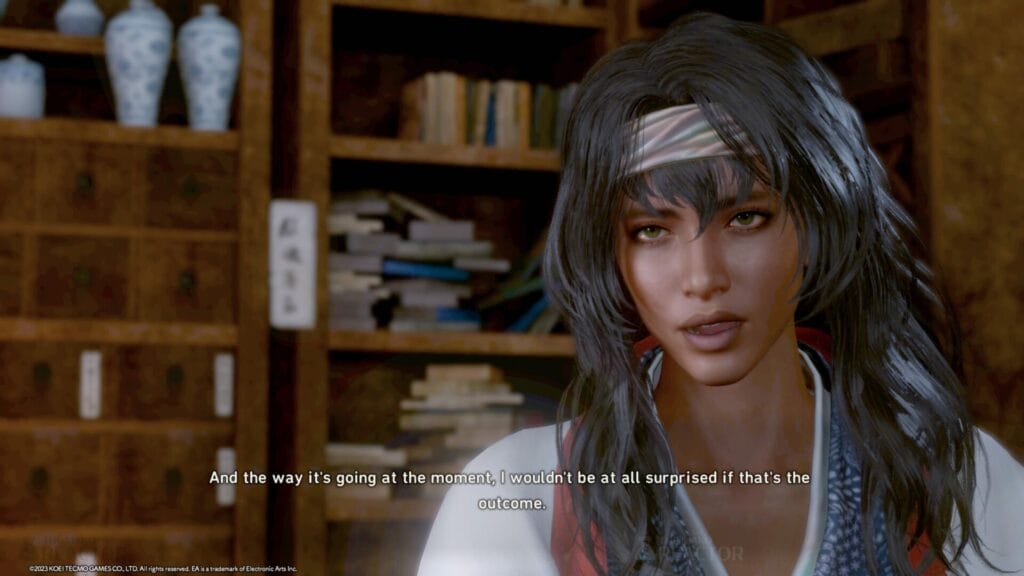
As a brand new game, I like Wild Hearts more than the base games for both Monster Hunter World and Monster Hunter Rise. It is that good. After some more content updates and optimization, it could join the ranks of Iceborne and Sunbreak as my favorites ever. Even in its current state, Wild Hearts is one of my favorite games of the year. The music is superlative, combat brilliant, and the core gameplay loop is exactly what I wanted from a new big hunting game. A lot of games in the genre feel like clones that improve in some ways but falter in others. Wild Hearts is the first time I’ve ever felt a game in the genre manage to come close to a real Monster Hunter and also exceed it in many ways.
After spending most of the last year on Sunbreak which I loved across platforms, Omega Force and EA’s Wild Hearts is a perfect complement for Monster Hunter fans looking to play another great game in the genre. While it is unfortunately held back by technical issues, Wild Hearts does a lot that takes the genre forward, and I can’t wait to keep playing the postgame through the coming months while we hopefully get more updates.
Even if it gets no more updates, I have no hesitation in recommending Wild Hearts on PS5 to any fan of Monster Hunter and the genre. Now hopefully EA and Koei Tecmo can get the amazing soundtrack released digitally and physically.
